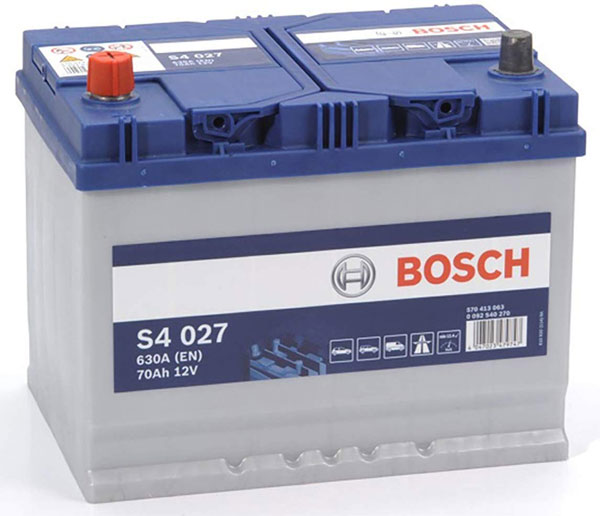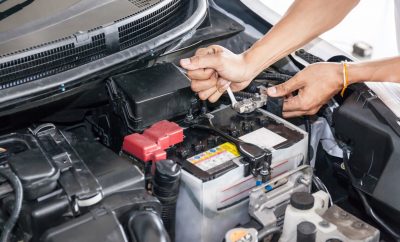Muscle Car
Things to Know about the Powerhouse of the Car – Battery!

A car is all about the speed and the power and only regular maintenance can extend its durability. While the exterior and interior of the car can be taken care of efficiently with the help of regular auto detailing, the electrical system needs special attention. The last thing you want, right before taking off on the roads, is a dead battery.
How does the battery of a car work?
On average, a car’s battery lasts around five years, but it depends on the exposure to extreme elements that shortens life.
The battery is the source of electricity required when it comes to giving power to all the electrical components present in your car. There is a chemical reaction that converts the chemical energy to electrical and delivers voltage to the starter. The battery then keeps the electrical energy constant by stabilizing the voltage and keeping the engine working.
Red-warning signs you must not ignore!
Since the battery is a small component, it becomes difficult to understand when is the ideal time to take it for a repair. Especially if you are a beginner. There are several tell-tale signals and symptoms which, if paid attention to, can tell you if your battery requires maintenance or not. Some of them are:
1. A slow engine: Your car should not have any slowdowns at all. However, if, while starting the vehicle, you hear an unexpected engine sound, or it takes longer than normal to start, you must take it for a thorough check.
2. Low battery fluid: A battery runs on a specific kind of fluid, and the casing of a battery is translucent to allow you to keep a track of it. In case you are still not able to see it, you can remove the red and black caps to check the level. If you see the fluid level is lower than the energy conductor lead plates inside, you have to test the battery and charging system. Overcharging, nonetheless, can be a reason for a drop in the level.
3. The check engine light: Also an indicator when it comes to the falling battery level, keep an eye on the check engine light. A low coolant light or any other strange system indicators might also signal low battery.
4. Age: One of the fundamental indications of the requirement of a change in the battery is its age. Ideally, depending on the model, your car’s battery remains in perfect order till the time it reaches three years, but once it has crossed that mark, it starts showing problems. This is also at times coupled up with the weather conditions, driving habits, and frequent short trips (those which are less than twenty minutes) made.
To understand if your battery is too old or not, you need to start by checking the four or five-digit code mentioned on the cover of the battery case. The first part of which entails a letter and a digit. Each letter, starting from A, refers to one month. The digit, on the other hand, refers to the year the battery was manufactured. The other digits mentioned on the code tells you where the battery was made.
Along with all these, you might also find a swollen battery casing or sulfur odor to be indicators for low or decreased battery life. Overheating, as mentioned, can be a significant reason for the drastically short life of your car battery.
Take good care of your car’s battery.
Your car acts like your best friend and knowing the nooks and crannies of how to take care of the battery at home is crucial. Or else, you would never know when the faulty battery would harm the other healthy parts of the car over time and make them malfunction. Follow these steps to ensure you maintain your car’s battery in proper order:
1. First, wipe the battery terminals with baking soda and water. Identify the positive side of the battery (which is the red cap) and then disconnect the negative side first. Lift the wire after turning the bolt connecting the wires to the negative side counterclockwise.
Repeat the process for the positive terminal and ensure that the wires don’t touch any metal parts of the car. Take a 1:1 mixture of water and baking soda, a hard-bristle brush, and scrub the terminals. While reconnecting, always go for the positive side first. This would get rid of any rust on the terminals.
2. Next, coat the ends in terminal spray to prevent any further corrosion. Spray till the connection is coated and hold the can at a 10 cm distance from the end as you do so.
3. Since severe vibration can damage the battery over some time, tighten the hold-down (in case it is wobbly and you hear the battery moving once you open the hood and shake it). Your car might have either a hold-down bar that stretches across the top of the battery or a hold-down pad.
4. A battery heater always helps prevent damage from the cold. Depending on your battery, you would find either an insulated fabric to wrap around the battery or a jacket that covers it completely.
12.6 volts is the ideal level your battery should be charged at, and you must always attach a trickle charger if you don’t use it for long periods.
Taking proper care of your car is vital in case you want a long-lasting effect out of it. Keep a close eye on the battery status and maintain a regular visit to the mechanic to ensure your car is working fine. Additionally, regular auto detailing would ensure that your car is in a top-notch condition both inside-out and you can make the most out of it.
Author’s Bio: Kevin Murphy is a gearhead, and the owner of Calgary based Happy Bays Car Wash and Detail Centre. His knowledge of all things related to automobiles has led him to found a car wash facility that offers both touch-free and self-serve car washes in Calgary. He writes on everything that catches his attention extensively in his blog. This topic caught his attention at work while delivering auto detailing services on a high-performing car.








0 comments